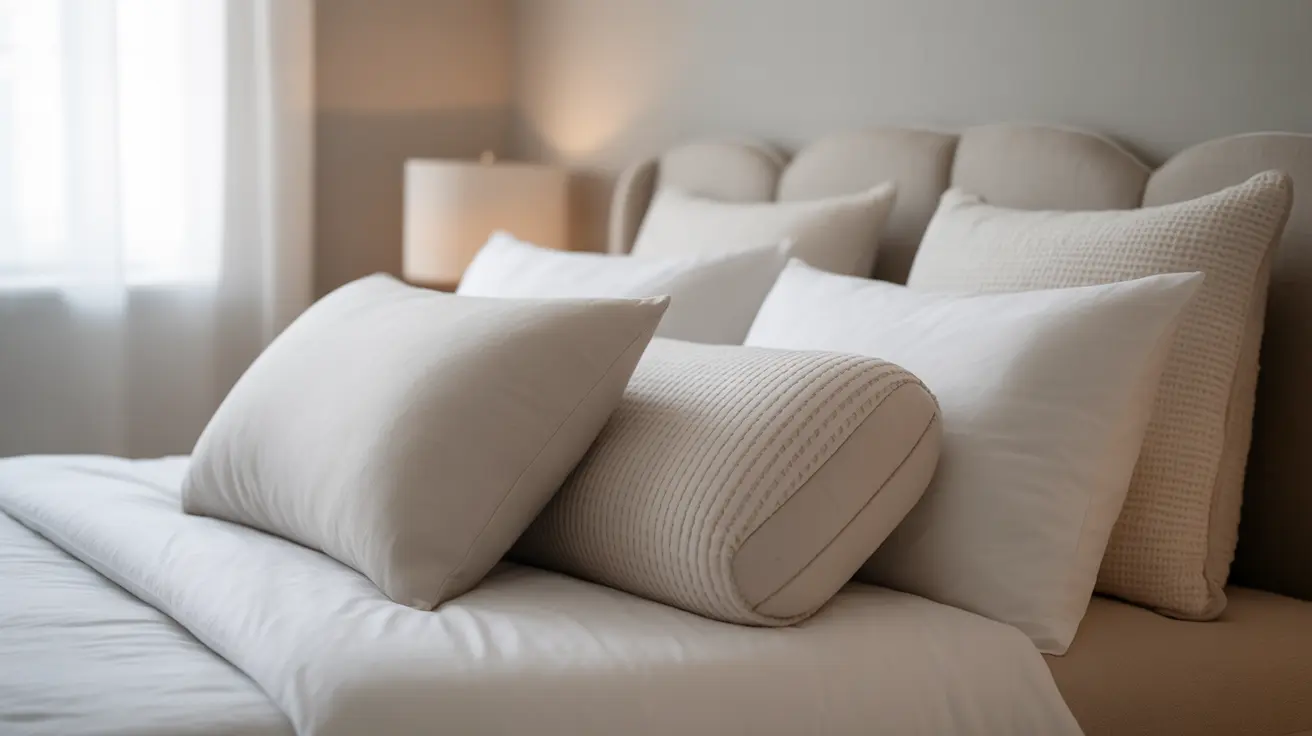For migraine sufferers, finding the right pillow can make a significant difference in both sleep quality and headache frequency. The proper support and comfort from a specialized migraine pillow can help prevent neck strain, reduce tension, and create an environment more conducive to restful sleep.
Understanding how to choose and use the right migraine pillow is crucial for managing headache symptoms and preventing attacks. Let's explore the various options available and learn how to select the best pillow for your specific needs.
Understanding the Connection Between Pillows and Migraines
Poor neck alignment during sleep can trigger or worsen migraine attacks by creating tension in the cervical spine and surrounding muscles. The right pillow provides proper support to maintain neutral spine alignment, potentially reducing the frequency and intensity of migraines.
Types of Migraine-Friendly Pillows
Memory Foam Pillows
Memory foam pillows conform to your head and neck shape, providing consistent support throughout the night. These pillows are particularly beneficial for migraine sufferers as they help maintain proper spinal alignment and reduce pressure points.
Cervical Support Pillows
Specially designed with a curved shape, cervical support pillows cradle the neck while supporting the head. This design helps maintain proper alignment and can significantly reduce neck strain that may trigger migraines.
Cooling Pillows
For migraine sufferers sensitive to heat, cooling pillows incorporate temperature-regulating materials or gel inserts. These pillows help maintain a comfortable temperature throughout the night, potentially reducing the likelihood of temperature-triggered migraines.
Choosing the Right Pillow Based on Sleep Position
Back Sleepers
Back sleepers benefit from pillows with medium loft and proper neck support. Look for designs with a slight cervical curve to maintain natural spine alignment.
Side Sleepers
Side sleepers need higher loft pillows to fill the gap between the shoulder and head. Choose pillows that maintain consistent support to prevent neck strain.
Stomach Sleepers
While not recommended for migraine sufferers, stomach sleepers should use very thin pillows to minimize neck rotation and strain.
Maintaining Your Migraine Pillow
Regular maintenance ensures your pillow continues providing optimal support. Most high-quality migraine pillows last between 18-24 months with proper care. Look for signs of deterioration such as loss of support, lumping, or flattening.
Frequently Asked Questions
What types of pillows are best for reducing migraine frequency and neck pain?
Memory foam and cervical support pillows are most effective for reducing migraine frequency and neck pain. These pillows provide consistent support and help maintain proper spinal alignment throughout the night.
How does poor neck support during sleep contribute to migraine attacks?
Poor neck support can cause muscle tension, nerve compression, and misalignment of the cervical spine. This physical stress can trigger migraine attacks or intensify existing headache patterns.
Can cooling pillows help prevent migraines caused by heat sensitivity?
Yes, cooling pillows can help prevent temperature-triggered migraines by regulating head and neck temperature throughout the night. These pillows use specialized materials or gel inserts to maintain a comfortable temperature.
How should I choose a migraine pillow based on my sleep position?
Select a pillow based on your primary sleep position: back sleepers need medium loft with cervical support, side sleepers require higher loft to maintain alignment, and stomach sleepers should use very thin pillows to minimize neck strain.
How often should migraine pillows be replaced to maintain proper neck support?
Replace migraine pillows every 18-24 months, or sooner if you notice signs of wear such as decreased support, lumping, or permanent compression. Regular replacement ensures consistent support for migraine prevention.




